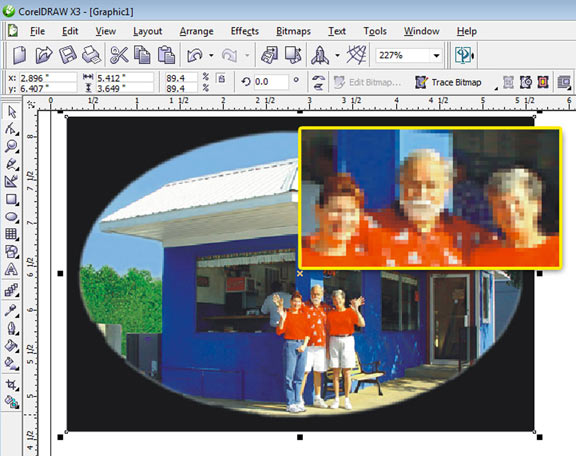

For example, reducing image size by 50% produces a better-looking image than reducing image size by 77%. Left to right: image with smaller dimensions, original image, image with larger dimensions. You can change the height and width of an image without changing the resolution. When you change the dimensions of an image, you produce better results using width and height values that are factors of the original values. As a result, an image may display as a different size on your screen than when it is printed. This will open the dialog box that will allow you to resize or resample the image. To resize the image, from Image > Resample.


Width % and Height % - let you resize the image to a percentage of its original size From the Welcome Screen, select Get Started and then click on the button to Open Document, alternatively, from File > Open.

Width and Height - let you specify the image dimensions In the Image size area, type values in one of the following pairs of boxes: Maintain aspect ratio - avoids distortion by maintaining the width-to-height ratio of the image To change the dimensions of an imageĪnti-alias - smooths the edges in the image As a result, an image may display as a different size on your screen than when it is printed. The size of the image on your screen depends on the pixel height and width of the image, on the zoom level, and on your monitor settings. If you increase image dimensions significantly, images may appear stretched and pixelated. When you increase image dimensions, the application inserts new pixels between existing pixels, and their colors are based on the colors of adjacent pixels. You can change the physical dimensions of images by increasing or decreasing their height and width. Two web services for shrinking file sizes are and. If your image placeholder is 800 pixels wide, resize the image to that and use image compression to shrink the file size without compromising quality too much. You then need to compress that image to be the smallest possible. The industry standard is 72ppi but this is outdated as PPI doesn’t affect loading time, file size does.Īs most cameras and camera phones manufactured in the last ten years or so are plenty enough for high-resolution images, all you need to do is resize a good quality image to the dimensions you need. You want a high enough image resolution to look good but don’t want the file to be so large that it slows down page loading. When preparing images for the web, you have to balance detail with file size. With formats which contain information on DPI, the current DPI size will be preserved. What resolution is best for publishing online? With formats which do not contain information on DPI, the size will be set to 7272 DPI. Even though the two terms are used interchangeably, they are technically different. The second part, about changing DPI in MS Paint, is likely concerned with printing the image, so DPI is more of a factor. As the first part of our question relates to a blog, you would be more concerned with Pixels Per Inch as they appear on screen, not DPI.


 0 kommentar(er)
0 kommentar(er)
